Birth Month Flowers And Their Meanings
Introduction: Exploring the Meaning Behind Birth Month Flowers
Birth month flowers have a long history, rooted in the customs and beliefs of different cultures and religions. Each month is linked to one or more flowers, each with its own special symbolism. Whether you're searching for a meaningful present or a personal symbol, knowing the significance of these flowers can create a stronger connection to our birth months.
In many cultures, giving birth month flowers as gifts is more than just a kind gesture. It's a way to communicate a message that carries cultural and emotional importance. For example, giving someone carnations in January can convey love and fascination, while gifting holly in December represents foresight and good luck.
The tradition of honouring birth month flowers goes back to ancient times when people believed these flowers possessed magical powers and used them in rituals and ceremonies. Today, including these flowers in gifts adds a personal touch that resonates deeply.
For those who appreciate everlasting beauty, Eternal Rose Boxes offer a lasting symbol of affection, capturing the essence of a specific birth flower in a timeless form. These meticulously preserved roses last for years, making them the perfect addition to any room or occasion.
Similarly, if you want to bring an element of luxury and sophistication to your space, consider personalised eternal roses. These meticulously preserved roses offer timeless beauty that lasts for years, making them the perfect addition to any room or occasion. By personalising these eternal roses, you can add an exquisite touch to your living space while reflecting the enduring nature of such a meaningful gift.
January Birth Flowers: Carnation, Snowdrop, and Personalised Rose Gifts
Carnation
Carnations are widely recognized as the primary January birth flowers. These vibrant blooms come in a palette of colors, each carrying its own unique meaning:
- Red carnations symbolise love and admiration.
- White carnations stand for pure love and good luck.
- Pink carnations carry the greatest significance, believed to have first appeared on Earth from the Virgin Mary’s tears, making them a symbol of a mother's undying love.
The durability and delightful fragrance of carnations have made them a popular choice for various occasions, representing fascination and distinction.
Snowdrop
Snowdrops, with their delicate white petals, signal the arrival of hope and the triumph over adversity as one of the first flowers to bloom at winter's end. They epitomise purity and innocence, acting as harbingers of spring.
Personalised Rose Gifts
When it comes to gift-giving during the month of January, you might consider personalised rose gifts which can be tailored to evoke similar sentiments as the traditional January blooms. These exquisite gifts allow you to express your love, appreciation, or congratulations in a truly unique way by combining the beauty of roses with the heartfelt touch of personalisation.
Historical and Cultural Significance
In history, carnations have been used in art and decor since ancient Greek and Roman times. Christians believe that the first carnation bloomed on earth when Mary wept for Jesus as he carried his cross. Snowdrops were once considered bad luck because they often grew in graveyards; however, this perception has shifted. Today, these January birth flowers are cherished for their beauty and depth of meaning.
When choosing a gift that carries significance, a thoughtful selection of flowers can express heartfelt messages. And if you're looking for added value while shopping for such gifts, be sure to explore discounts & special offers available for your purchase.
February Birth Flowers: Violet and Primrose
When you delve into the realm of February birth flowers, the Violet and Primrose take center stage with their profound symbolism and historical significance.
Violet
The Violet, adorned with its delicate purple petals, is not only aesthetically pleasing but also represents loyalty, faithfulness, and humility. Often intertwined with the concept of spiritual wisdom, violets are believed to convey messages through dreams.
In ancient Greece, these flowers were closely associated with Aphrodite, embodying love and fertility. During the Victorian era, violets became a symbol of modesty and virtue.
Primrose
Primroses, on the other hand, symbolise young love, renewal, and an intense longing for someone without whom life seems incomplete. They are often gifted to convey the sentiment "I can't live without you."
According to folklore, primroses were believed to be mystical keys that could unlock the gates of heaven. Additionally, they are strongly associated with early spring, representing new beginnings.
The enchantment exuded by these flowers is reminiscent of the Eternal Blossom Rose, a flower that epitomises eternal love, beauty, and youthfulness. Just as each month has its designated flower, there are also birth stones that carry unique meanings which perfectly complement the timeless elegance of eternal roses. This harmonious pairing creates an enchanting and personalised gift or decor piece.
By exploring the intricate symbolism behind the Violet and Primrose, one gains a deeper appreciation for the profound meaning these February birth flowers have carried throughout history.
March Birth Flowers: Daffodil and Jonquil
March marks the beginning of spring, and with it comes the vibrant March birth flowers: the daffodil and the jonquil. These flowers are not only visually appealing but also hold deep meanings and symbolism.
Daffodil
- Symbolism: The daffodil represents new beginnings and fresh starts, which perfectly matches its early spring blooming. It signifies upcoming success; receiving a single daffodil is believed to indicate bad luck, while a bunch guarantees happiness.
- Cultural significance: In Wales, it is thought that spotting the first daffodil of the season brings good fortune for the next 12 months. The daffodil is also known as the flower for the 10th wedding anniversary.
Jonquil
- Symbolism: Jonquils, which are a type of daffodil, symbolize returned affection and desire. Their pleasant scent and delicate petals are seen as representations of kindness and friendship.
- Cultural significance: Throughout history, jonquils have been highly valued for their healing properties and used in traditional remedies.
Both flowers offer a delightful way to commemorate special occasions in March or simply bring a touch of spring's hopefulness into your home.
Did You Know?
The main difference between a daffodil and a jonquil lies in their botanical classifications. While all jonquils are daffodils, not all daffodils are jonquils. The term "jonquil" specifically refers to certain types of fragrant, small-flowered daffodils.
If you're looking to preserve beautiful moments with long-lasting elegance, you may consider exploring Eternal Blossom's collection. They offer real rose arrangements that can last up to a year, capturing the essence of these beloved blooms.
Fun Fact!
Eternal Blossom's preserved roses undergo a special preservation process that allows them to maintain their natural appearance and feel for an extended period, without requiring water or sunlight.
Alternatively, if you're fascinated by the concept of preserving the beauty of these flowers throughout the year, you might want to explore the world of Preserved Luxury Roses. This comprehensive guide for 2024 will introduce you to the preservation process, benefits, care tips, creative uses, symbolism, occasions, where to buy, and FAQs surrounding these exquisite roses. These everlasting blooms can bring sophistication and warmth to your space, much like how March's daffodils and jonquils symbolize the awakening of spring.
April Birth Flowers: Daisy and Sweet Pea
Daisy: The daisy, one of the April birth flowers, is admired for its simple beauty and is often associated with purity, innocence, and true love. This flower embodies a sense of new beginnings, echoing the freshness of April's springtime. Daisies come in a variety of colours, each carrying its own meaning. White daisies represent innocence, while red daisies convey youthful energy.
Sweet Pea: The sweet pea complements the daisy as another April birth flower. It signifies blissful pleasure and is also used to say goodbye or thank you. Sweet peas have a delightful fragrance that has made them a popular choice in perfumery through the years. They are often given to express fond farewell, gratitude, and the pleasure of meeting someone.
The historical and cultural significance of these April birth flowers runs deep. Daisies have been found in ancient Egyptian ceramics and were used by Romans for medicinal purposes. Sweet peas date back to the late 17th century and were cultivated by Henry Eckford, who transformed them from wildflowers to the ornamental beauties we admire today.
For those who cherish lasting elegance, consider pairing these birth month flowers with boxed personalised eternal roses. Their enduring beauty and personal touch can complement the ephemeral charm of traditional April blooms. Similarly, if you're captivated by the longevity aspect of floral gifts, exploring how infinity roses are preserved might deepen your appreciation for these lasting tokens of affection.
May Birth Flowers: Lily of the Valley and Hawthorn
The month of May is represented by two enchanting flowers, each with its own unique symbolism and historical significance. The delicate Lily of the Valley carries profound meanings:
- Purity and Humility: Often associated with traditional weddings, this flower symbolises the return of happiness.
- Sweetness and Motherhood: Its sweet fragrance and tender appearance connect it to the nurturing qualities of motherhood.
Conversely, the Hawthorn plant offers a distinct set of symbolic attributes:
- Hope and Protection: In some cultures, hawthorns are planted near homes to bring good fortune and ward off evil spirits.
- Happiness in Marriage: It is believed that bringing hawthorn blossoms into a home will ensure a prosperous marriage.
These May birth flowers have played important roles in different cultures:
- Lily of the Valley:
Used in traditional medicines.
Celebrated during festivals in France known as "La Fête du Muguet."
Hawthorn:
Featured prominently in Celtic traditions where it's considered sacred.
Cutting down a lone hawthorn was thought to bring bad luck.
For those interested in sustainable gifting options like infinity roses that offer beauty without compromising environmental responsibility, you might appreciate the Eco-Friendly Benefits of Infinity Roses. Each flower's unique characteristics remind us that natural products such as these come with variations that only enhance their appeal—much like how every Natural Product Variation found in arrangements from Eternal Blossom makes them one-of-a-kind.
June Birth Flowers: Rose and Honeysuckle
The Rose, a flower of deep emotional significance, stands as one of the June birth flowers. It's rich symbolism encompasses love, honour, faith, beauty, and balance. The profound connection between roses and romance is universally recognised, but colour variations expand their meanings—red for passionate love, white for purity, yellow for friendship, and pink for admiration.
Honeysuckle complements the rose with its own sweet allure and symbolises happiness and devoted affection. This fragrant vine blossoms in June's warmth, embodying the bonds of love that are strengthened over time.
Historically, roses have been entwined with countless cultures. From Greek mythology where roses were linked to Aphrodite, the goddess of love, to Roman banquet halls adorned with rose petals to signify confidentiality ("sub rosa"), the rose has always been more than just a flower. Similarly, honeysuckles' nectar-rich flowers have long been treasured for their medicinal properties and sweet taste.
Incorporating these June birth flowers into your life can be a lasting way to celebrate their timeless appeal. You can even cherish the beauty of roses all year round with Eternal Blossom's One Year Rose Guarantee—a testament to their enduring presence.
The intertwining of roses and honeysuckles as June birth flowers speaks to a month characterised by growth and enduring affections—a perfect representation of relationships that flourish with warmth and care.
July Birth Flowers: Larkspur and Water Lily
Larkspur
Symbolism: The larkspur, a towering flower known for its spur-like shape, carries a wealth of meaning. Each colour variation represents a different sentiment: pink signifies fickleness, white conveys a happy nature, and purple is typically associated with first love. Collectively, larkspurs symbolise an open heart and ardent attachment.
Cultural Significance: In Victorian times, larkspurs were given to express feelings that were perhaps too delicate to say out loud, making them a flower of subtle communication.
Water Lily
Symbolism: Water lilies are synonymous with purity and majesty. Often found serenely floating on water, they epitomise spiritual enlightenment and rebirth due to their cycle of blooming in the morning and retreating at night.
Cultural Significance: Sacred to various cultures around the world, they hold a particularly special place in Egyptian mythology and Buddhist traditions as symbols of resurrection and divine birth.
Historical Significance
July birth flowers have been celebrated through history for more than just their beauty; they carry deep-rooted meanings that have been honoured in literature, art, and cultural rituals. The larkspur’s association with positive connections and the water lily’s embodiment of purity make them significant for those born in July. These flowers not only represent facets of their personalities but also connect them to ancient traditions that appreciate the complexity and depth of flora.
August Birth Flowers: Gladiolus and Poppy
August birth flowers are known for their stunning beauty and deep symbolism. They hold special meanings for those born in this month.
Gladiolus
Symbolism: The gladiolus, sometimes called the 'sword lily' because of its long, slender shape, represents strength of character, integrity, and perseverance. It also symbolises infatuation, with the person giving the flower conveying their love and passion.
Cultural Significance: In ancient Rome, gladiators were often given gladiolus flowers after a victorious battle as a symbol of their strength and bravery. Over time, the flower has continued to be associated with resilience and moral uprightness.
Poppy
Symbolism: Poppies are widely known as symbols of remembrance and comfort during times of loss. Red poppies, specifically, are linked to honouring fallen soldiers. However, they can also represent joy and achievement.
Cultural Significance: Commonwealth countries observe Remembrance Day by wearing poppy pins as a tribute to those who died in war. Historically, poppies have been used in medicine for their calming effects, leading them to be associated with sleep in ancient myths.
The rich historical and cultural backgrounds of these August birth flowers add depth to their symbolism. They are not just ordinary birthday symbols but meaningful gifts that connect with personal experiences and shared history.
September Birth Flowers: Aster and Morning Glory
Aster
Symbolism: Asters have rich symbolism and are often associated with love, wisdom, and valour. They are seen as a talisman of enchantment and carry the message of patience and elegance. The name "aster" comes from the Greek word for "star," representing the dual nature of love as both timeless and fleeting. Varieties: Asters come in various types, boasting lush textures and vibrant shades ranging from pink to purple. They make excellent additions to any flower arrangement, adding depth and beauty.
Morning Glory
Symbolism: Morning glories symbolise affection and the strong bonds of love. Their twisting vines represent interconnectedness, while the short lifespan of their flowers serves as a reminder of how love can be fleeting. Cultivation: Morning glories are climbing plants that showcase their colourful blooms, which unfurl with the rising sun and close as it sets.
Historical Significance
Both aster and morning glory have played significant roles in different cultures throughout history:
- Asters were considered sacred to the gods in ancient times and were often used in wreaths placed on altars.
- Morning glories have been mentioned in historic Chinese medicinal texts for their soothing properties.
By incorporating aster and morning glory into your custom infinity rose arrangements or long-lasting rose boxes, you can create a unique gift that not only looks beautiful but also carries deep symbolism.
October Birth Flowers: Marigold and Cosmos
October's colours are warm and earthy, and its birth flowers, Marigold and Cosmos, perfectly capture the essence of this season. Each flower has its own special meaning and historical importance.
Marigold
Symbolism: Marigolds are often linked to the sun because of their bright yellow and orange colours, representing passion and creativity. In some cultures, they are also associated with sadness or honoring the dead, which is why they are commonly used in Day of the Dead festivities.
Cultural Significance: Throughout history, marigolds were used for their healing properties and believed to ward off evil spirits. Their strong nature and ability to thrive in tough conditions made them a symbol of resilience.
Cosmos
Symbolism: Cosmos flowers symbolise harmony and balance, taking their name from the Greek word for "order." They also represent love and modesty.
Cultural Significance: Originally from Mexico, cosmos were once thought to be a remedy for malaria. During the Victorian era, these flowers were highly valued for their simple yet elegant beauty.
Both October birth flowers remind us of the ever-changing cycles of life in nature. They bring us solace and inspiration as we transition into the colder months. With their vibrant colours and deep meanings, Marigold and Cosmos truly add a special touch to autumn's floral display.
November Birth Flowers: Chrysanthemum
When you think of November birth flowers, the vibrant Chrysanthemum, often called "mum", instantly comes to mind. This flower is rich in meaning and symbolism:
- Joy and Optimism: Traditionally, chrysanthemums symbolise happiness and optimism due to their bright and cheerful appearance.
- Loyalty and Honesty: In many cultures, these flowers represent loyalty and honesty, making them a thoughtful gift for friends and loved ones.
- Longevity and Rejuvenation: In Asian cultures, particularly in Japan, the Chrysanthemum is a symbol of longevity and rejuvenation. It plays a central role in the Festival of Happiness or Chrysanthemum Day.
The historical significance of the Chrysanthemum spans various cultures. In ancient Greece, they were associated with powerful meanings such as protection and health. The Victorians used chrysanthemums to convey well-wishes for a friend or loved one. Across the world in East Asia, they are celebrated for their medicinal properties, believed to hold life-giving powers.
Chrysanthemums command respect not just for their beauty but also for their deep-seated cultural importance as November birth flowers. They serve as a reminder of the changing seasons with their late bloom reminding us that beauty can thrive even as winter approaches.
December Birth Flowers: Narcissus and Holly
December birth flowers bring a message of hope and joy, often needed during the shortest days of the year. The Narcissus, specifically the paperwhite, is a symbol of good wishes, hope, and wealth. It’s believed to encourage happiness and convey that the only thing sweeter than this flower is the receiver of it.
Holly, on the other hand, represents a wish for domestic happiness. Its evergreen nature is symbolic of life and vitality during the winter months, serving as a reminder that life endures even in dormancy. The red berries of holly carry connotations of rejuvenation and new beginnings.
Historical Significance
Narcissus
- Often associated with the Greek myth of Narcissus, these flowers have been linked to both self-love and vanity. However, in Victorian times, they were given as tokens to signify respect and admiration.
Holly
- With a presence deeply rooted in Christmas tradition, holly has been used for centuries to protect homes from evil spirits and to celebrate new growth during the Winter Solstice ceremonies in Europe.
Both flowers are not only significant in their meanings but also serve as festive decorations during the holiday season, infusing homes with their beauty and symbolism.
The Enduring Appeal of Birth Month Flowers
Birth Month Flowers And Their Meanings resonate deeply with individuals across diverse cultures, carrying unique symbolism and significance. Each flower represents a particular month and conveys a message that might be rooted in historical traditions or the qualities attributed to the flowers themselves.
- January: Carnations symbolise love and admiration, while snowdrops represent hope and purity.
- February: Violets stand for loyalty, faithfulness, and humility; primroses indicate young love.
- March: Daffodils signify rebirth and new beginnings, as jonquils suggest desire for affection returned.
- April: Daisies embody innocence and purity, sweet peas convey blissful pleasure.
- May: Lily of the Valley suggests sweetness and a return to happiness, hawthorns denote hope and supreme happiness.
- June: Roses are icons of love and appreciation; honeysuckles represent the bonds of love.
- July: Larkspurs signify lightness and levity; water lilies are symbols of purity and majesty.
- August: Gladiolus depict strength of character; poppies offer consolation or remembrance.
- September: Asters convey wisdom, valor, and faith; morning glories stand for affection.
- October: Marigolds symbolise warmth and creativity; cosmos flowers reflect order, peace, and serenity.
- November: Chrysanthemums signify joy and longevity.
- December: Narcissuses represent hope for wealth and prosperity; holly signifies domestic happiness.
Understanding these meanings enhances personal connections, making gift-giving an intimate gesture. Whether it's a single stem or an exquisite long-lasting rose box from your collection, selecting a birth month flower for someone special can communicate your heartfelt emotions without words. This practice pays homage to an ancient tradition that continues to thrive due to its ability to convey profound messages through the timeless language of flowers.




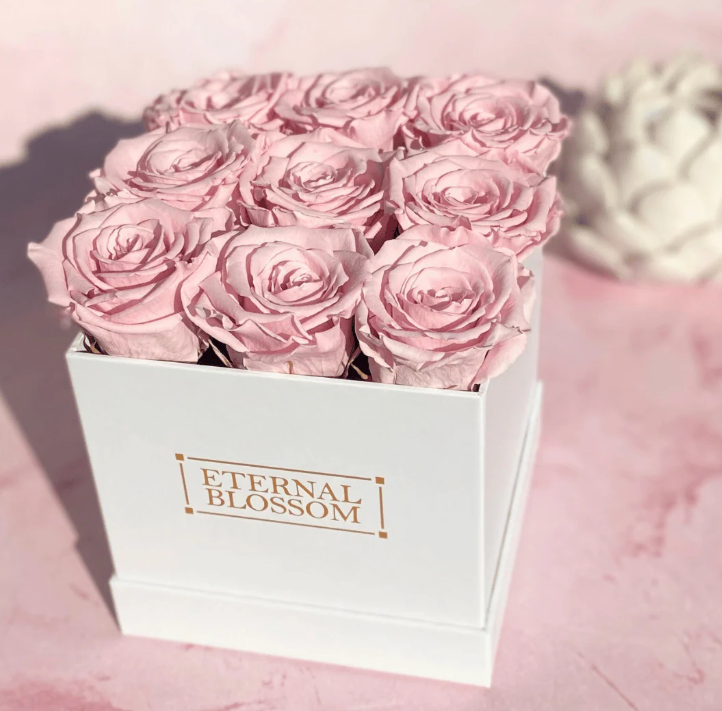
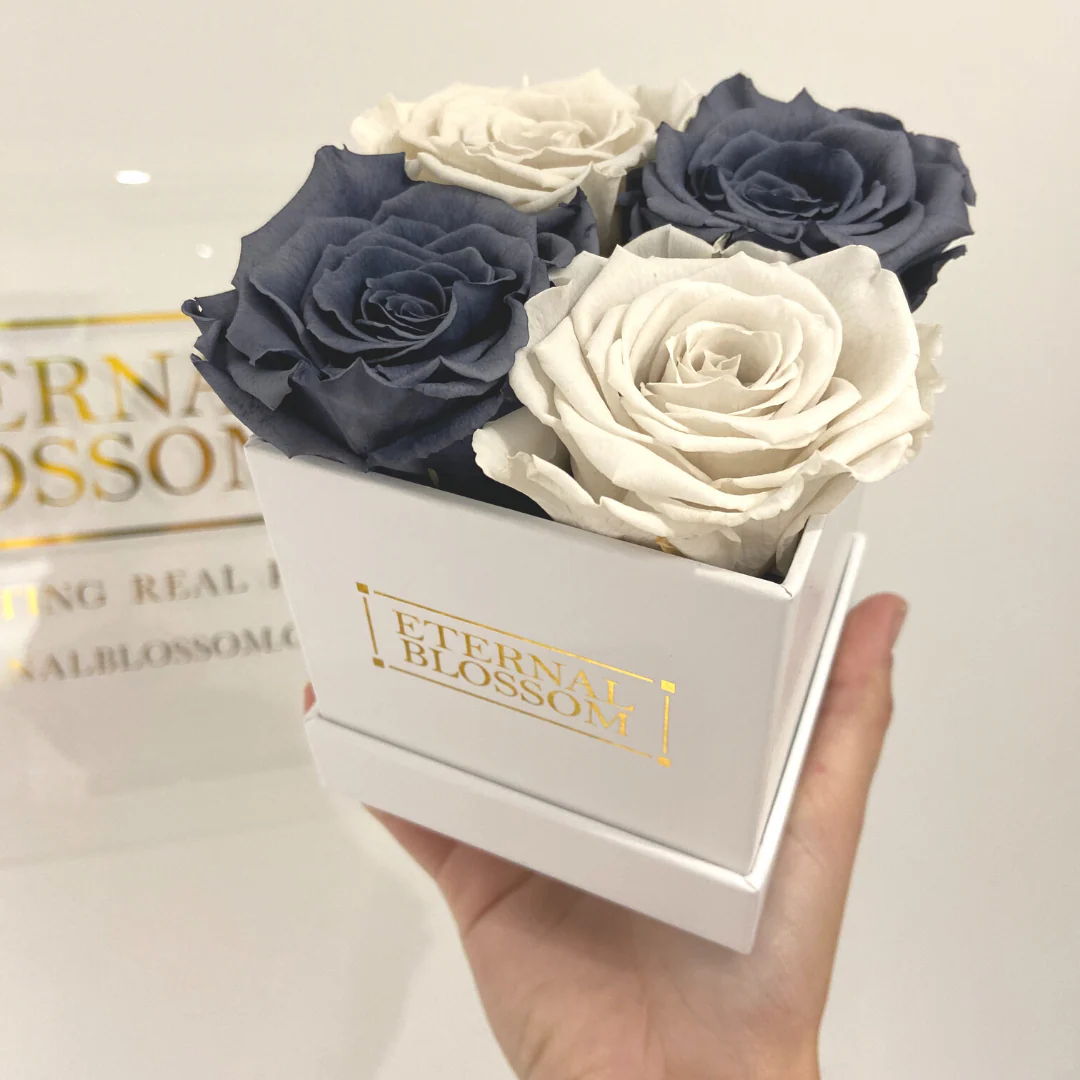
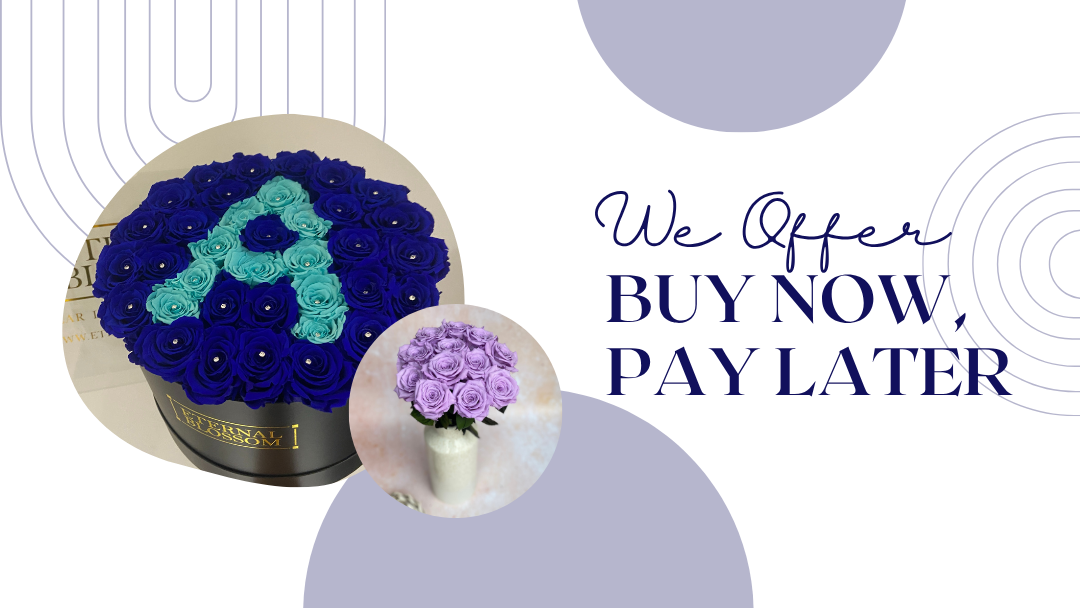
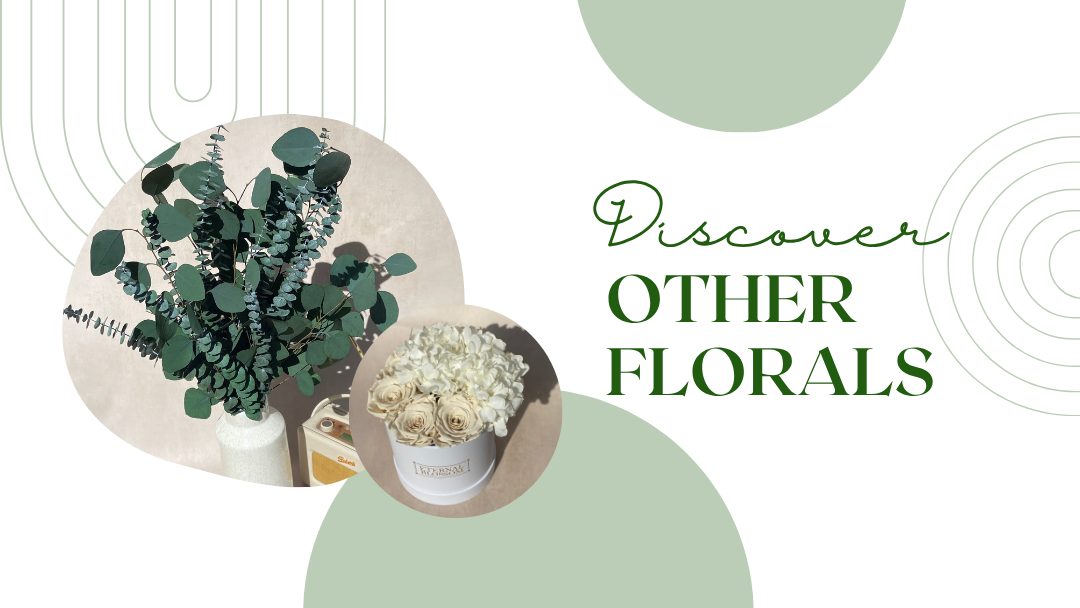
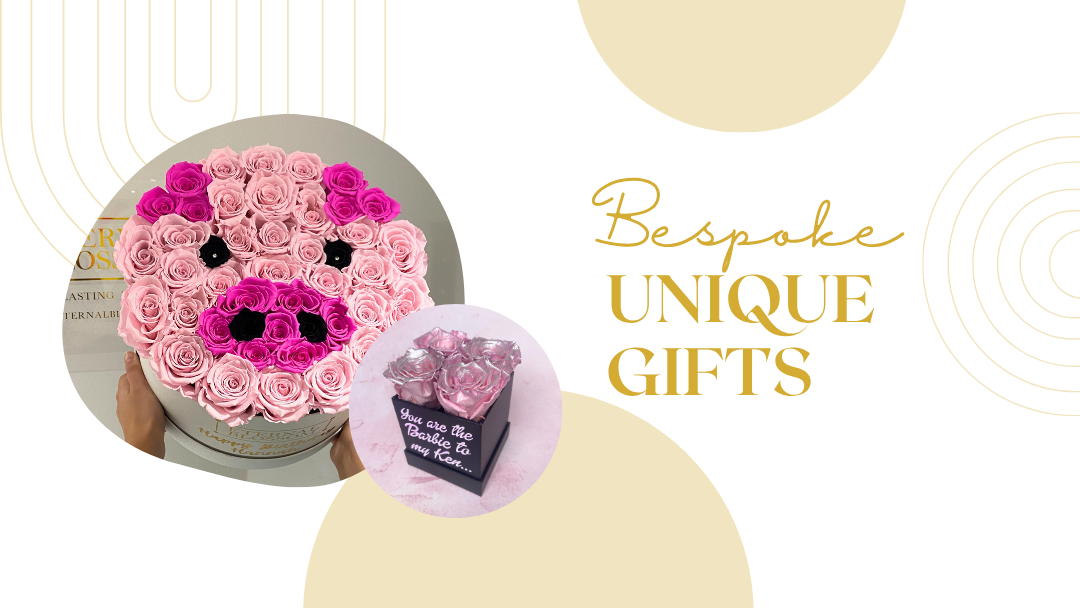
Leave a comment